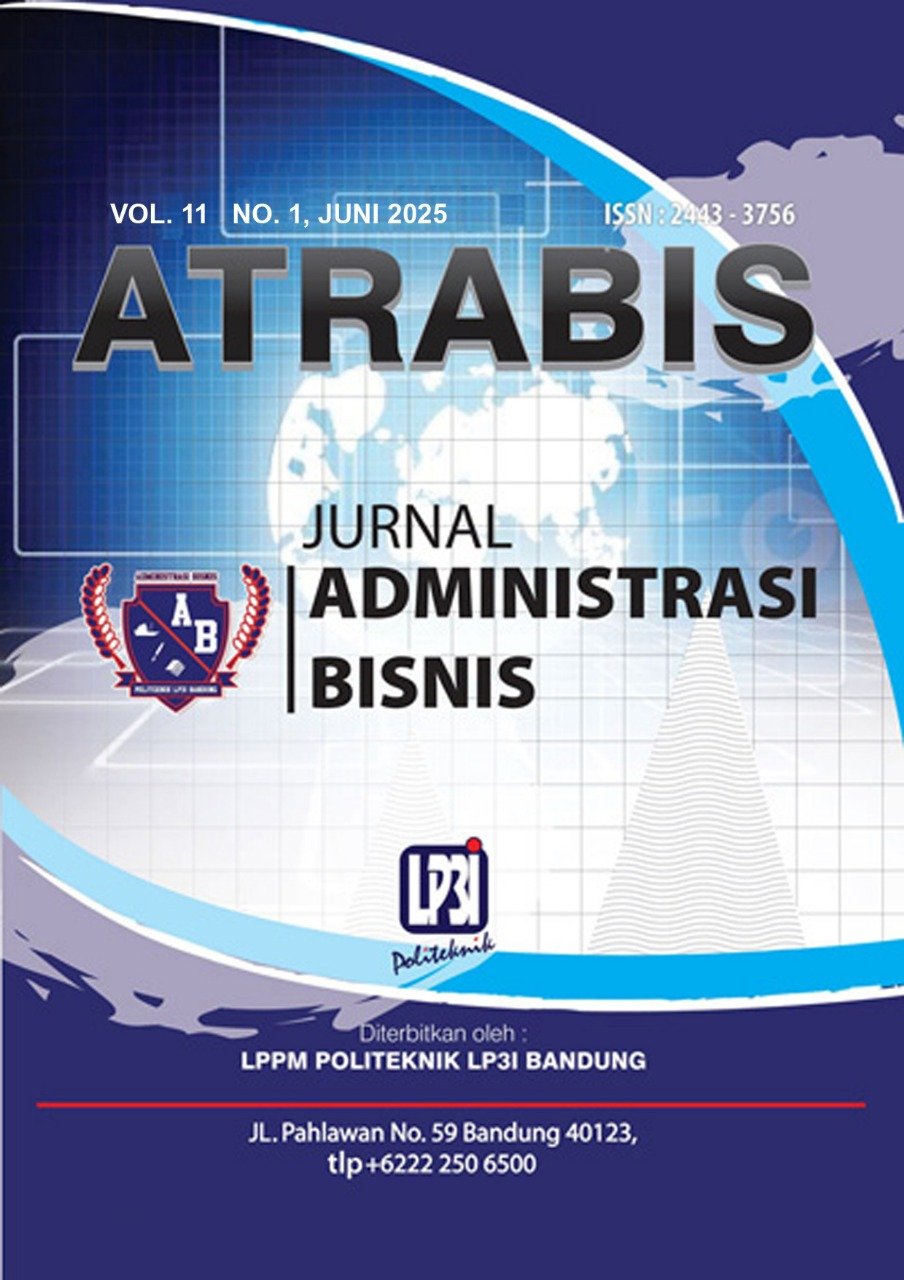Kredibilitas Influencer dan Psikologi Micro-Moments dalam Keputusan Pembelian Generasi Z
DOI:
https://doi.org/10.38204/atrabis.v11i1.2398Keywords:
kredibilitas influencer, micro-moments, Generasi Z, keputusan pembelianAbstract
Dalam era digital yang serba cepat, Generasi Z menunjukkan pola konsumsi yang sangat dipengaruhi oleh interaksi singkat dan emosional di media sosial, terutama melalui konten influencer. Penelitian ini bertujuan untuk mengeksplorasi hubungan antara kredibilitas influencer—yang mencakup keahlian, kepercayaan, dan daya tarik—dengan keputusan pembelian impulsif yang terjadi dalam micro-moments. Dengan pendekatan kualitatif fenomenologis, delapan informan Generasi Z diwawancarai secara mendalam untuk memahami pengalaman subjektif mereka dalam membeli produk berdasarkan konten influencer. Hasil analisis tematik menunjukkan bahwa kredibilitas influencer berperan signifikan dalam memicu rasa percaya dan keterlibatan emosional yang mempercepat proses pengambilan keputusan. Selain itu, platform seperti TikTok dan Instagram memfasilitasi terjadinya pembelian spontan melalui fitur interaktif dan narasi visual yang kuat. Temuan ini memberikan kontribusi terhadap pengembangan strategi pemasaran digital yang lebih responsif dan autentik dalam menjangkau konsumen muda.
Downloads
References
Campbell, C., & Farrell, J. R. (2020). More than meets the eye: The functional components underlying influencer marketing. Business Horizons, 63(4), 469–479. https://doi.org/https://doi.org/10.1016/j.bushor.2020.03.003
Casaló, L. V, Flavián, C., & Ibáñez-Sánchez, S. (2020). Influencers on Instagram: Antecedents and consequences of opinion leadership. Journal of Business Research, 117, 510–519. https://doi.org/https://doi.org/10.1016/j.jbusres.2018.07.005
Cheah, J.-H. (2017). The Impact of Social Media Influencers on Purchase Intention and the Mediation Effect of Customer Attitude. Asian Journal of Business Research, 7, 19–36. https://doi.org/10.14707/ajbr.170035
Chen, Chih-Ping. (2014). Forming digital self and parasocial relationships on YouTube. Journal of Consumer Culture, 16(1), 232–254. https://doi.org/10.1177/1469540514521081
Dalangin, J. J. G., McArthur, J. M. B., Salvador, J. B. M., & Bismonte, A. B. (2021). The impact of social media influencers purchase intention in the Philippines. Jurnal Studi Komunikasi, 5(3 SE-Articles), 551–568. https://ejournal.unitomo.ac.id/index.php/jsk/article/view/4399
Djafarova, E., & Bowes, T. (2021). ‘Instagram made Me buy it’: Generation Z impulse purchases in fashion industry. Journal of Retailing and Consumer Services, 59, 102345. https://doi.org/https://doi.org/10.1016/j.jretconser.2020.102345
Freberg, K., Graham, K., McGaughey, K., & Freberg, L. A. (2011). Who are the social media influencers? A study of public perceptions of personality. Public Relations Review, 37(1), 90–92. https://doi.org/https://doi.org/10.1016/j.pubrev.2010.11.001
Google. (2015). Micro-Moments: Your Guide to Winning the Shift to Mobile. Think with Google. Consumer Insights. https://www.thinkwithgoogle.com/consumer-insights/consumer-journey/micro-moments/micromoments-guide/
Hadero, H., & Swenson, A. (2023). TikTok “de-influencers” want Gen Z to buy less - and more. AP News. https://apnews.com/article/technology-business-27e6f62051b887b005ef79c8b455b11a
Hughes, Christian, Swaminathan, Vanitha, & Brooks, Gillian. (2019). Driving Brand Engagement Through Online Social Influencers: An Empirical Investigation of Sponsored Blogging Campaigns. Journal of Marketing, 83(5), 78–96. https://doi.org/10.1177/0022242919854374
Lou, C., & and Yuan, S. (2019). Influencer Marketing: How Message Value and Credibility Affect Consumer Trust of Branded Content on Social Media. Journal of Interactive Advertising, 19(1), 58–73. https://doi.org/10.1080/15252019.2018.1533501
Ohanian, R. (1990). Construction and Validation of a Scale to Measure Celebrity Endorsers’ Perceived Expertise, Trustworthiness, and Attractiveness. Journal of Advertising, 19(3), 39–52. https://doi.org/10.1080/00913367.1990.10673191
Rook, D., & Fisher, R. (1995). Normative Influences on Impulsive Buying Behavior. Journal of Consumer Research, 22, 305–313. https://doi.org/10.1086/209452
Sala, A., Porcaro, L., & Gómez, E. (2024). Social Media Use and adolescents’ mental health and well-being: An umbrella review. Computers in Human Behavior Reports, 14, 100404. https://doi.org/https://doi.org/10.1016/j.chbr.2024.100404
Schivinski, B., George, C., & and Dabrowski, D. (2016). Measuring Consumers’ Engagement With Brand-Related Social-Media Content. Journal of Advertising Research, 56(1), 64–80. https://doi.org/10.2501/JAR-2016-004
Sokolova, K., & Kefi, H. (2020). Instagram and YouTube bloggers promote it, why should I buy? How credibility and parasocial interaction influence purchase intentions. Journal of Retailing and Consumer Services, 53, 101742. https://doi.org/https://doi.org/10.1016/j.jretconser.2019.01.011
Turner, A. (2015). Generation Z: Technology and Social Interest. The Journal of Individual Psychology, 71, 103–113. https://doi.org/10.1353/jip.2015.0021












